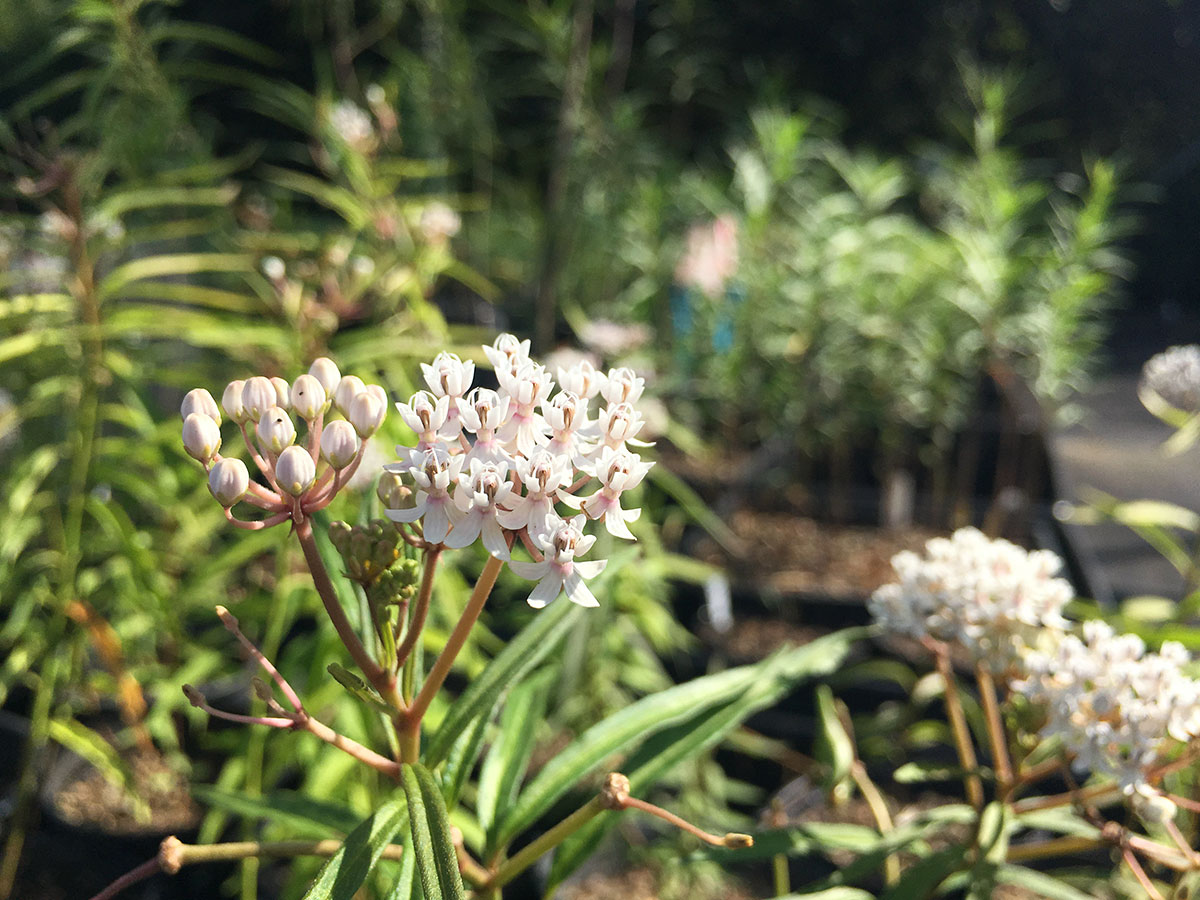Migratory Matters

Swamp milkweed (Asclepias incarnata) propagated by the Wildflower Center.
WILDFLOWER STAFF ARE WAITING TO SEE if pink milkweed will re-emerge in the Theme Gardens this spring. It prefers moist soils and is native to many states.
As a small child growing up in Michigan, Andrea DeLong-Amaya used to watch giant seed pods of the common milkweed plant split open in her backyard. Out would come clusters of silky floss to drift in the air. “That’s a very fond childhood memory — watching those little fairies floating away.”
Now as the Wildflower Center’s horticulture director, DeLong-Amaya’s interest is in the cargo each silky puffball carries: a seed that can develop into a milkweed plant desperately needed by the world’s only migrating insect. The population of monarch butterflies has plummeted in recent years, with those overwintering in Mexico this year occupying less than two acres.
Milkweed leaves and flowers are the sole food source for monarch caterpillars, and experts consider habitat loss a major reason for the butterfly’s decline. For those in Texas and elsewhere who want to help monarchs survive, DeLong-Amaya offers some tips for turning your backyard into a fuel stop for these spring and fall wanderers.
- Learn to recognize native species of milkweed already on your property to help keep them out of harm’s way. “One of the best things you can do if you have milkweed is preserve them because they’re hard to get going,” DeLong-Amaya says.The Wildflower Center’s native plant databse has images and descriptions of milkweed species that occur naturally in Texas and elsewhere. Some examples are also on the grounds of the Center in the heart of Texas, a major throughway for those monarchs that travel to and from Mexico. For instance, green antelopehorns occur throughout the Center’s 279 acres and special care is taken to ensure their survival. The Ann and O.J. Weber Butterfly Garden hosts pearl milkweed vine. And the Trailhead Garden that leads to the Center’s southern trails also showcases Texas milkweed, which develops white flowers. “They’ve done really well for us,” she says. “If we can get more, I want to add them to the Family Garden that will open May 4.”
- If you have the right conditions, add milkweed species to your landscape that are native to your area and among the 30 or so favored by monarchs. Many milkweeds prefer full sun and sandy, well-drained soils. In part, that is because most have a large single root (tap root) that can be challenged to grow through compact soil. Milkweeds, especially seedlings, also develop fungal problems in soil that doesn’t drain well. “Once they get big enough they’re usually OK,” DeLong-Amaya says, “but that first year can be touch and go.”
One of the best things you can do if you have milkweed is preserve them because they’re hard to get going
Among the milkweed species you could consider that sustain monarchs are: spider milkweed in Texas, Arizona, Utah and 5 other states; green milkweed in Colorado, Illinois, Maryland and a dozen-plus other states; showy milkweed in the Texas panhandle, California and 20 other western and southern states; and common milkweed found in the northern and eastern U.S. (it is believed to be the nectar source for most monarchs heading to Mexico).
- Consider planting milkweeds in low-profile locations. Although the milky white sap of these plants is poisonous, its bitter taste means kids and pets won’t likely be interested. Keeping milkweeds tucked away is more about reducing the chance that they’ll be damaged by garden visitors. And gardeners may prefer a less prominent location for when monarch larvae chew up the plants’ leaves.
- Whether you can grow milkweeds or not, you can provide other nectar options for adult monarchs. While their caterpillars rely solely on milkweed plants for food, the butterflies aren’t picky. The wildflowers they favor include purple coneflower, Gregg’s mistflower and, in the fall, frostweed.

